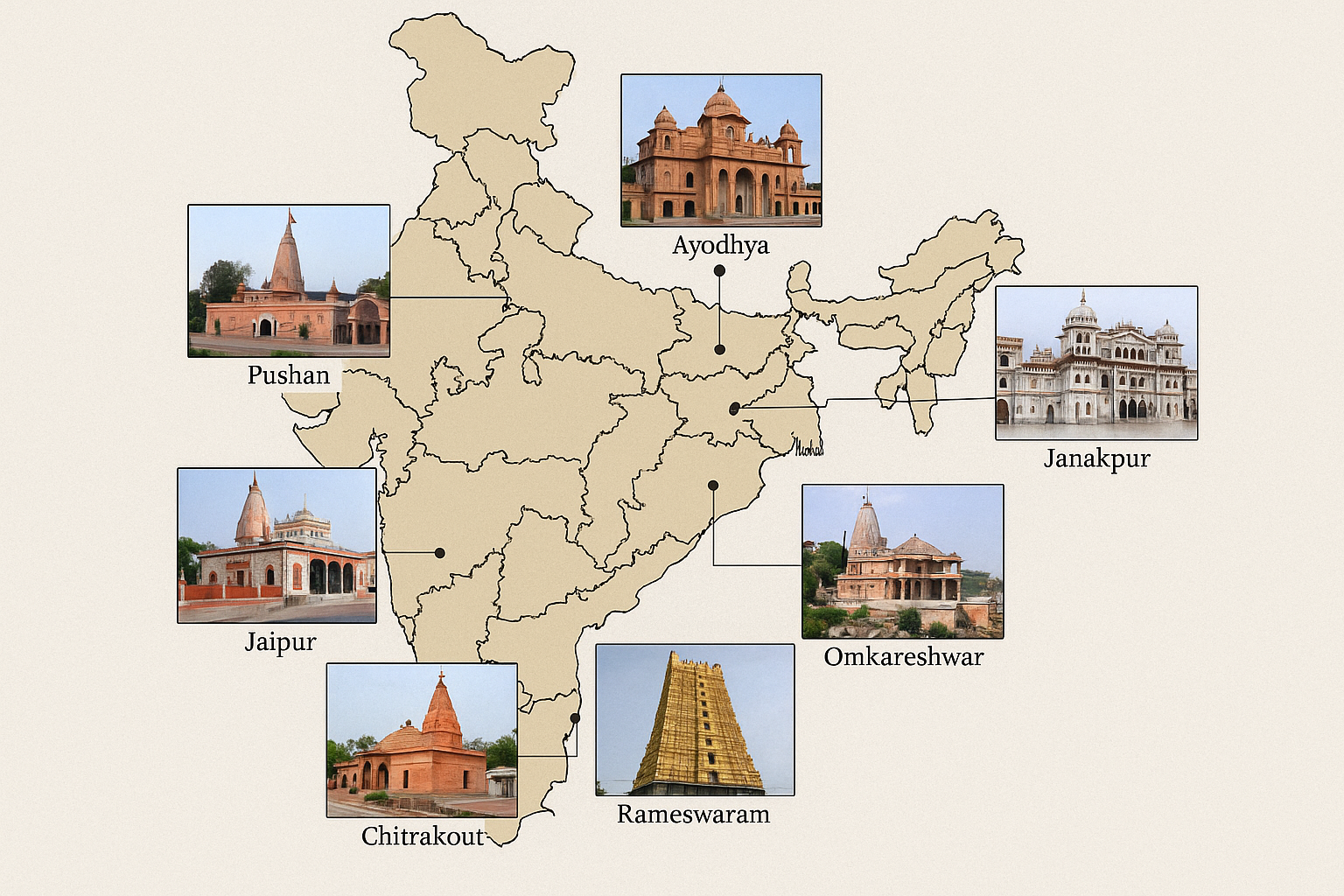Subtotal $0.00
The influence of Ramanandi Akhara, one of India’s most revered Vaishnavite institutions, extends far beyond its main headquarters in Ayodhya. Through a vast network of branch ashrams spread across India, the Akhara continues to promote its core values of bhakti (devotion), seva (service), and dharma (righteousness) to communities both rural and urban. These branch ashrams are spiritual lifelines—quiet yet powerful centers where seekers gather for worship, learning, and inner transformation.
Each branch ashram functions as a miniature reflection of the main Akhara, preserving its spiritual practices, rituals, and educational efforts. These ashrams are often located in spiritually significant cities such as Varanasi, Prayagraj, Haridwar, Nashik, Ujjain, Chitrakoot, and Vrindavan, and even in remote areas where access to traditional knowledge is rare.
Managed by initiated sadhus, acharyas, and local disciples, the branch ashrams serve multiple purposes. They are places of daily worship and community satsangs, but also centers of learning where scriptures like the Ramcharitmanas, Bhagavad Gita, and Upanishads are taught. Many also run Gurukuls, offering free education in Sanskrit, philosophy, and ritual practices for children and young aspirants.
A typical day in a branch ashram begins with mangal aarti at dawn, followed by bhajan, Vedic chanting, and spiritual discourses. Meals are offered as prasadam, and visitors are encouraged to engage in seva, cultivating humility and devotion through service. The spiritual discipline and welcoming atmosphere make these ashrams a refuge for both renunciants and householders seeking peace and guidance.

What truly distinguishes Ramanandi branch ashrams is their deep engagement with local communities. Many offer health services, food distribution programs, spiritual counseling, and festive celebrations on major Vaishnavite events like Ram Navami, Hanuman Jayanti, and Diwali. These gatherings foster a sense of spiritual unity and uplift the cultural consciousness of the regions they serve.
Despite their traditional outlook, many branch ashrams have embraced modern outreach tools, conducting online satsangs, youth workshops, and interfaith dialogues to stay connected with a wider audience. Their approach bridges the ancient and the contemporary, making Sanatana Dharma relevant and alive in every age.
During Kumbh Melas and major yatras, these branch ashrams also coordinate with the main Akhara to facilitate pilgrim support, host discourses, and organize group travel for devotees. They act as spiritual embassies of Ramanandi Akhara, spreading light wherever they are rooted.
In a time when spiritual isolation is common and community bonds are weakening, the branch ashrams of Ramanandi Akhara offer stability, wisdom, and divine connection. Whether nestled in bustling cities or quiet villages, these ashrams keep the eternal flame of bhakti, knowledge, and seva burning bright across the nation.

